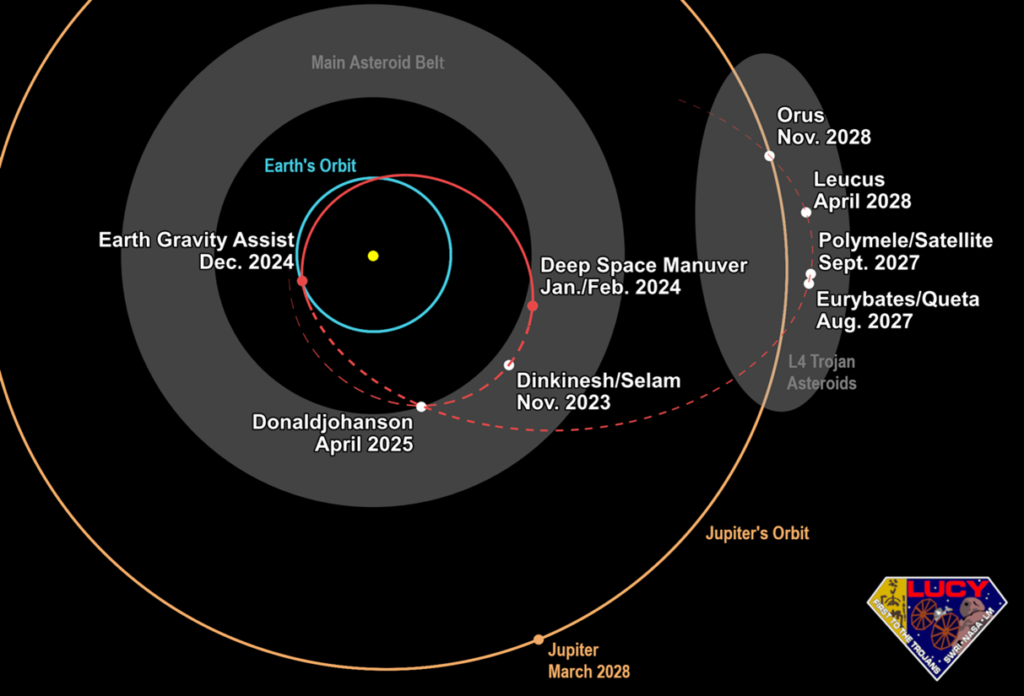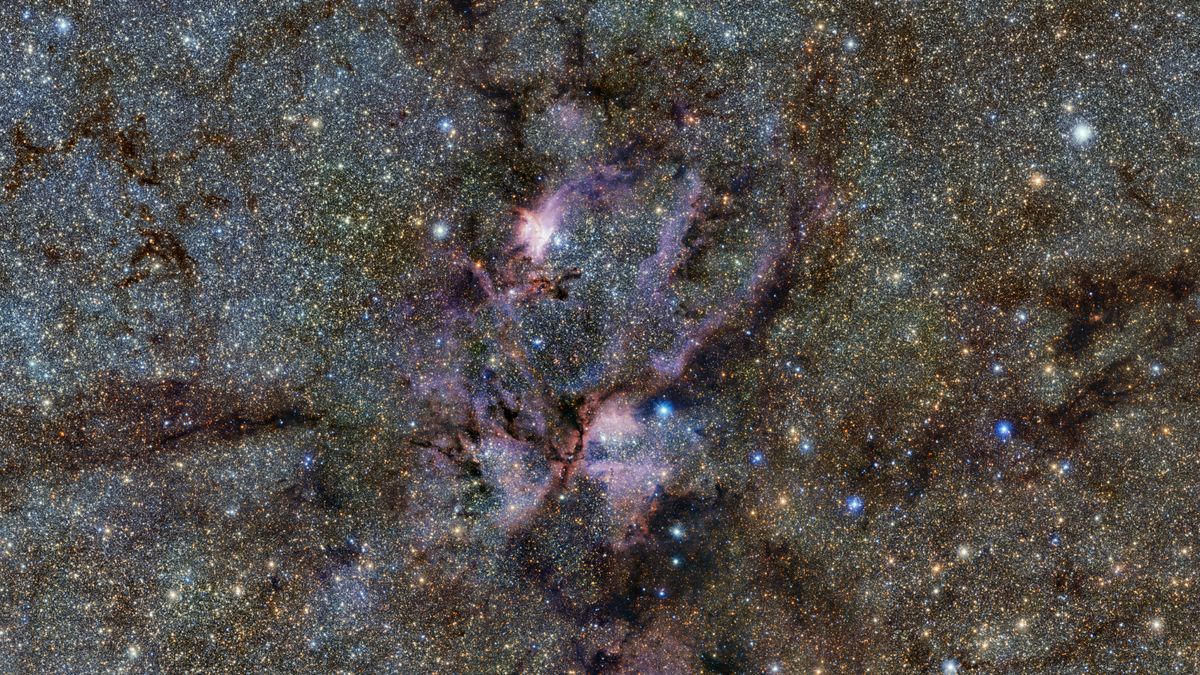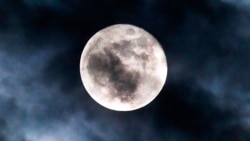NASA’s Lucy mission is activating its engines in space for its journey to the unexplored Trojan asteroids, located beyond Jupiter as it moves around the sun. On January 31, the Lucy spacecraft will fire its main engines for the first time since its launch in August 2021, using around half of its fuel. Following this, a larger maneuver is scheduled for February 3, with both operations aimed at changing Lucy’s velocity by 2,000 miles per hour. Prior to these maneuvers, the spacecraft had only undergone small shifts in velocity and trajectory.
In December 2024, Lucy will undergo a flyby of Earth, gaining a second gravity assist to redirect its trajectory. This will shift the spacecraft from its current orbit between Mars and Jupiter, enabling it to travel beyond the main asteroid belt. During this journey, Lucy will visit the asteroid 52246 Donaldjohanson in April 2025.
The spacecraft will then head towards Jupiter and the Trojan asteroids, which are positioned in two groups around the gas giant. Lucy will first visit the Greek camp of Trojan asteroids, targeting the asteroid Eurybates and its satellite Queta in August 2027. It will continue to fly past four more Trojan asteroids and three additional moonlets before concluding its mission in 2033.  The trajectory of Lucy with major events indicated including its first enginepowered man (Image credit: NASA/Goddard/SwRI)
The trajectory of Lucy with major events indicated including its first enginepowered man (Image credit: NASA/Goddard/SwRI)












